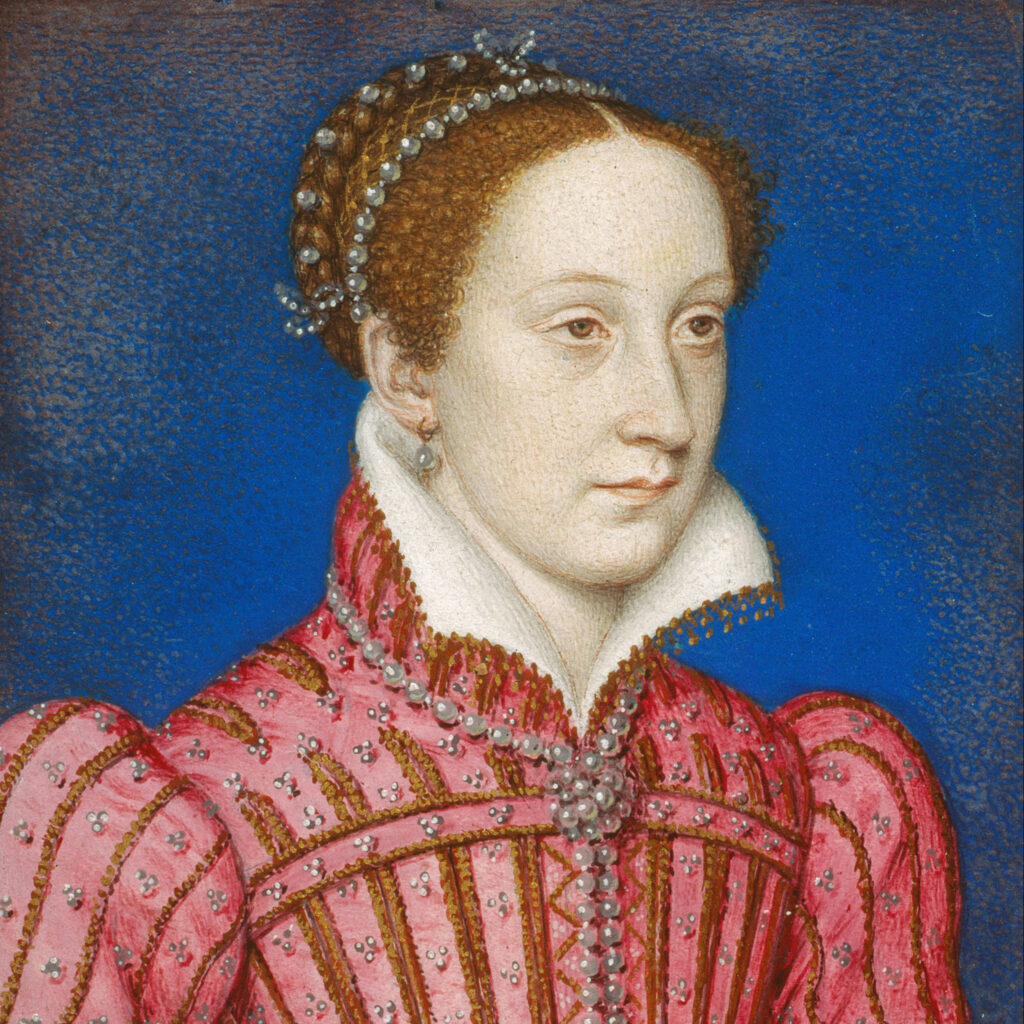Mary Queen of Scots

Mary, Queen of Scots portrait.

Anthony Babington – conspirator in the Babington Plot.
The subject of countless books, documentaries and even movies, Mary Stuart, better known as Mary, Queen of Scots, was one of the most interesting monarchs in British history.
Born on December 14, 1542, her father James V of Scotland died when Mary was only six days old and she therefore became Queen of Scots. Engaged as a child to the Dauphin Francis – heir to the French throne – she was sent to France for her upbringing for her own safety due to the Rough Wooing – an Anglo-Saxon War between Scotland and England lasting from 1542 to 1551.
In 1561 however, Dauphin Francis died and Mary returned to Scotland. Mary was herself a Catholic and her return to rule over Scotland was viewed suspiciously as the country was now officially Protestant.
In 1565 Mary married her first cousin, Henry Stuart, Lord Darnley. It wasn’t a happy marriage at all and many people believed his death in 1567 was the result of murder. People also believed that Mary’s next husband, James Hepburn, better known as Lord Bothwell – was, in fact, the murderer.
Their marriage, done with Protestant Rites, was deeply unpopular with Catholics who considered the marriage to be unlawful and following an uprising, Mary abdicated and fled to England to seek the protection of Queen Elizabeth I. However, as Mary had previously made claims to Elizabeth’s throne and being considered by many English Catholics as the legitimate sovereign of England, Elizabeth arrested and imprisoned her.
Due to its central location, Derbyshire was considered a relatively safe place to hold Mary captive and during the following years Mary was imprisoned in various places within the county.
On February 4, 1569 Mary was taken to Tutbury Castle. George Talbot, the 6th Earl of Shrewsbury and his wife Elizabeth, known as Bess of Hardwick, were effectively her jailors for those 15 years. During this period there were various rumours of escape plots and due to this Mary was moved to various different locations. She was imprisoned at Wingfield Manor near Alfreton on three occasions to avoid suspected attempts to liberate her and was held at Chatsworth at various times in the 1570s. She also stayed at The Old Hall Hotel, Buxton, after petitioning Queen Elizabeth to allow her to do so. She suffered from a mystery illness and wanted to bathe in the spa waters of Buxton which were believed to have healing properties. Her petition was successful and from 1573 she was allowed to spend most summers at The Old Hall Hotel.
In 1585 she spent a night in Derby itself, staying at Babington Hall which stood on the corner of St. Peter’s Street and what is now Babington Lane.
Babington Hall was the town house of Anthony Babington, and it was a plot involving him and the other chief conspirator, John Ballard, to assassinate Queen Elizabeth I and put Mary on the throne, that led to her demise and death. The plot was discovered when on July 7, 1856 a letter sent in code from Babington to Mary and her coded reply on July 17, were decoded and shown to be ordering the assassination of Queen Elizabeth I.
John Ballard was arrested on August 4, 1586 and under torture he confessed and implicated Babington. All the conspirators were sentenced to be hung, drawn and quartered whilst Mary herself was sentenced to death by beheading. The sentence was duly carried out on February 8, 1857 in front of 300 witnesses at Fotheringhay Castle in England.


